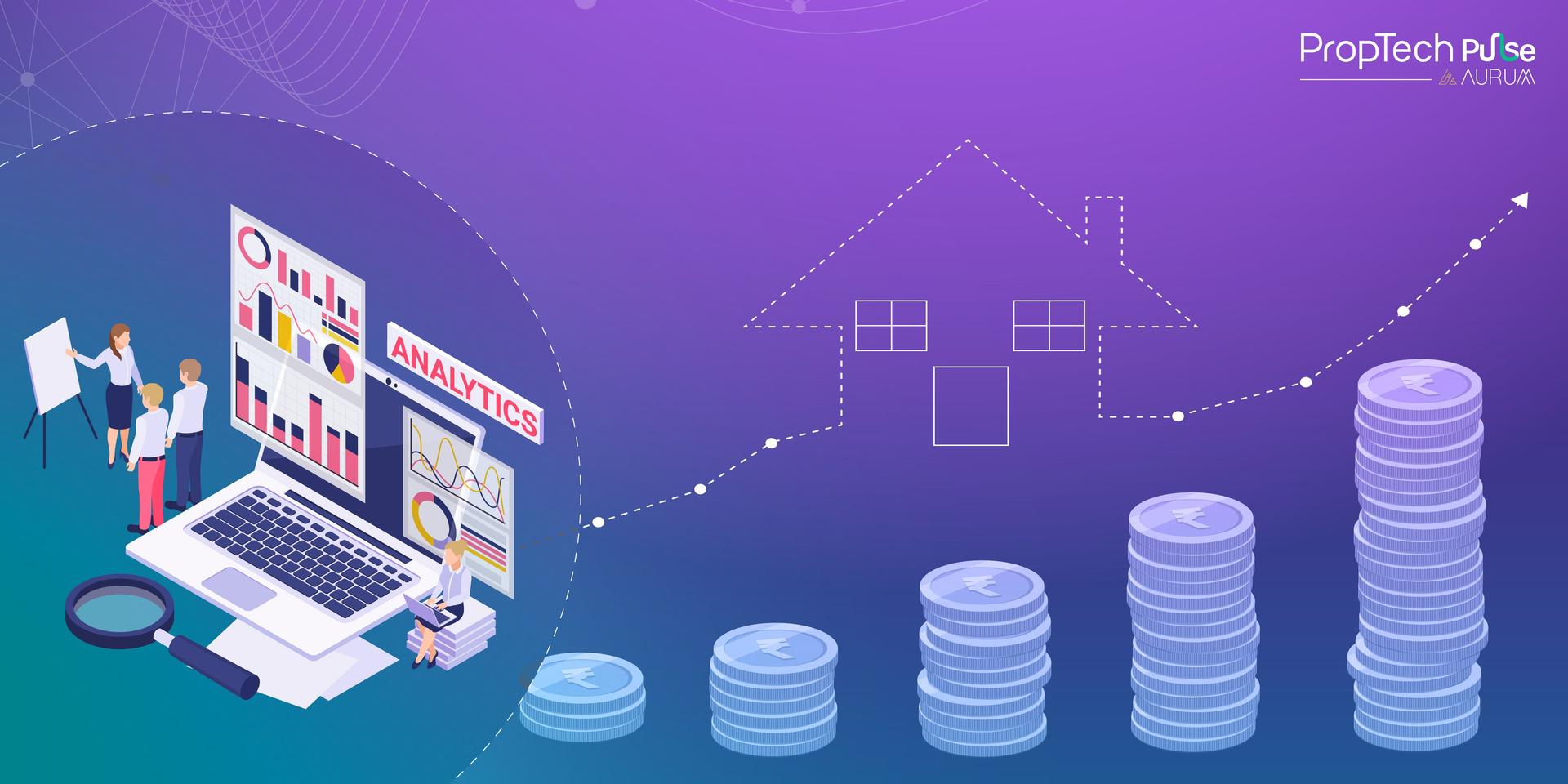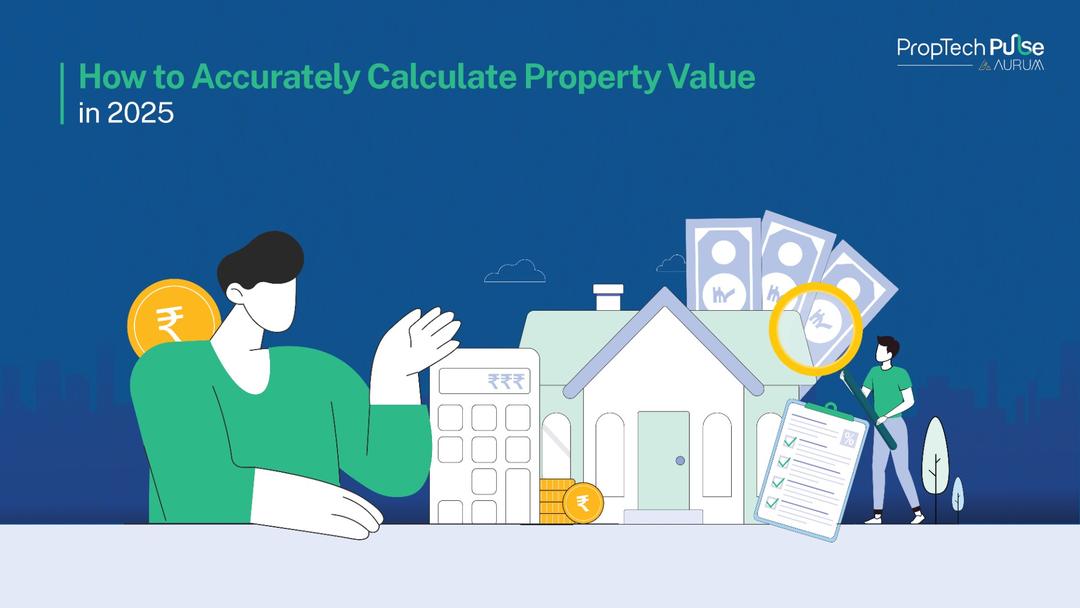Real Estate Efficiency

What is Predictive Analytics and How Does it Apply to Real Estate? What if you could accurately predict market trends, property values, and investment risks? Imagine possessing a crystal ball for real estate—something that allows you to make wiser, fact-based choices. Predictive analytics makes this not only a dream but a reality. Using the might of predictive analytics and big data, real estate agents can uncover rich insights, converting strings of data into opportunity-turning paradigms.
Let's explore how predictive analytics is transforming the business.
The Role of Big Data in Real Estate
Big data has fundamentally transformed the real estate sector, expanding the scope of analysis far beyond traditional methods. Today, industry professionals can examine extensive data from diverse sources, enabling them to uncover market trends, understand consumer behavior, and make more precise property valuations.
Big data is helping real estate in:
- Comprehensive Market Analysis: Aggregates online listings and public records to identify trends and market patterns.
- Accurate Property Evaluation: Uses algorithms to analyze sales history, listings, and economic trends for precise valuations.
- Strategic Marketing: Predicts seller behavior, targets campaigns, and matches buyers efficiently.
- Property Development: Helps developers choose locations, assess demand, and analyze demographics.
- Risk Mitigation: Enables proactive risk assessment and accurate valuations.
- Operational Efficiency: Digitalizes lease management, tenant communication, and maintenance tracking.
- Enhanced Customer Experience: Personalizes searches, saves time, and improves property recommendations.
- Marketing Optimization: Targets demographics, personalizes campaigns, and maximizes budget efficiency.
Types of Data Used in Predictive Real Estate Models
Predictive real estate models leverage diverse data sources to enhance accuracy and decision-making. Key data types include:
- Real estate sales over time: Study the transactions to estimate the future worth of a property.
- Available properties: Study the changes in the value of the market over time.
- Economic data: Check the status of the economy and how it is expected to develop over time.
- Trends in population: Identify what buyers want now and what they are likely to want in the future.
- Trends on social media: Gauge public perception and emerging trends.
- Traffic data: Find out how easy the area is to reach for possible buyers.
Sources of Real Estate Data for Predictive Analytics
- MLS (Multiple Listing Services): Sites such as Zillow & Aurum PropTech offer property listing, prices & trends.
- Public Records: Government databases provide history of ownership, tax info & zoning information.
- Satellite & GIS Data: Google Earth & ESRI furnish geographic & topographic data.
- Social Media & Web Scraping: Facebook, Twitter & web crawlers analyze market trends.
- Financial & Economic Reports: RBI, World Bank & Bloomberg statistics monitor market trends.
Benefits of Using Predictive Analytics in Real Estate
Predictive analytics offers a range of advantages, from smarter investments to improved risk management. Let us understand the benefits of predictive analytics in depth.
Improved Investment Decisions
Predictive analytics allows investors to identify high-growth sectors and locate undervalued assets, leading to better-informed investment choices.
- Predictive analytics market will reach $28.1 billion by 2026, as per MarketsandMarkets, with growing use in decision-making.
- By studying past data and trends in the market, investors can minimize financial risks and maximize returns.
Forecasting Market Trends and Property Values
Predictive models explore past price patterns and economic conditions in an attempt to forecast future property prices.
- PwC indicates that 56% of real estate professionals use predictive analytics to make accurate market estimates.
- This data-based approach helps property sellers price properties competitively and investors make educated decisions.
Risk Management and Mitigation
Predictive analytics uncovers potential threats such as market volatility, tenant defaults, and maintenance issues.
- A Deloitte report discovered that companies employing analytics lower financial risk by as much as 30%.
- Through forecasting uncertainties, property agents can formulate pre-emptive strategies to protect their investments.
Reference: Zealousys
Applications of Predictive Analytics in the Real Estate Sector
Predictive analytics has practical applications across different real estate segments, enhancing efficiency and profitability. Let us look at these in depth for better understanding:
Residential vs Commercial Real Estate Analytics
| Application | Insights |
|---|---|
| Residential | Predictive analytics assesses property values, demand trends, and climate risks. |
| Commercial | Focuses on lease optimization, market forecasting, and portfolio performance. |
Predictive Models for Real Estate Pricing
- Rent Optimization: AI-driven models analyze demand, occupancy rates, and market conditions.
- Property Valuation: Predictive analytics estimates future property prices based on historical data.
Tenant Retention and Lease Optimization
- Engagement Platforms: AI-driven platforms personalize tenant experiences, enhancing satisfaction.
- Lease Management: Predicts lease expirations and market shifts for proactive renewal strategies.
Tools and Software for Predictive Analytics in Real Estate
Now let us explore the advanced tools and technologies that power predictive analytics, transforming data into actionable insights for smarter real estate decisions.
Machine Learning and AI in Real Estate Forecasting
- Predictive Market Analysis: Historical patterns, market patterns, and economic influences are examined with machine learning and AI to predict property prices and rental demand.
- Automated Risk Assessment: Machine learning programs evaluate investment risk based on geographic trends, interest rates, and customer behavior.
- Optimized Pricing Strategies: Machine learning algorithms help to calculate competitive property prices based on analysis of market fluctuations.
- Smart Property Tips: Artificial intelligence-based software recognizes profitable investment opportunities, guided by data-based analysis.
- Decision-Making Efficiency: Minimizes uncertainty and maximizes strategic planning for real estate developers and investors.
Data Visualization Tools for Real Estate Analytics
- Interactive Dashboards: Systems such as Power BI and Google Data Studio display intricate real estate information in graphic forms.
- Real-Time Market Insights: Allows investors to track property trends, ROI, and financials.
- Multi-Source Data Integration: Integrates multiple streams of data, including CRM, transaction history, and market reports.
- Improved Decision-Making: Simple and easy-to-understand visual reports enable stakeholders to make sound investment decisions.
- Enhanced Transparency: Provides simple-to-read graphs and charts, presenting data to every user.
Challenges and Limitations of Predictive Analytics in Real Estate
Despite its benefits, predictive analytics comes with challenges that must be addressed. Let us understand this:
Data Quality and Accuracy Concerns
One of the biggest challenges facing predictive analytics is maintaining data quality and accuracy. Real estate information is frequently disjointed, dated, or inconsistent, making predictions less reliable. Inaccurate data input can lead to poor investment decisions, impacting profitability. External influences such as economic change or regulatory changes can also reduce model accuracy.
Solution: Improving Data Quality and Accuracy
To tackle this, real estate companies must invest in data validation, cleansing, and enrichment activities. AI-enabled tools can help detect and resolve inconsistencies. Integrating real-time data sources further ensures models remain current with new market trends, enhancing predictive reliability.
Overcoming Analytical Bias
Historical data can be biased and passed on to predictive models, resulting in distorted predictions. This is avoided by making balanced models using diverse data sources. Periodic audits, algorithm tweaking, and AI ethics guidelines minimize bias and ensure unbiased and objective real estate insights.
Solution: Mitigating Bias in Predictive Analytics
In order to fight bias, it is important to use fairness-conscious algorithms that identify and rectify uneven trends. Utilizing a representative diversity dataset across multiple market scenarios makes the model more impartial. Regular monitoring and human intervention also guarantee fair decision-making in real estate analysis.
Integration of Multiple Data Sources
Predictive analytics in real estate requires the integration of various data sources, such as market trends, property values, economic indicators, and demographic data. However, integrating disparate data systems and ensuring compatibility can be complex and time-consuming.
Solution: Seamless Data Integration
To overcome this, real estate companies should invest in robust data management platforms that allow seamless integration of structured and unstructured data. Leveraging cloud-based tools and APIs can help streamline the process and enable real-time access to diverse data sources.
High Costs of Implementation and Maintenance
The cost of implementing and maintaining predictive analytics tools can be prohibitively high, particularly for small to medium-sized real estate companies. This includes the expenses related to software, data storage, AI model development, and skilled personnel required for managing analytics.
Solution: Cost-Effective Strategies for Adoption
Real estate firms can consider phased implementation, starting with essential predictive analytics features before scaling. Cloud-based analytics platforms with subscription models can reduce upfront costs, and outsourcing data analytics tasks to specialized firms can help reduce operational expenses.
Data Privacy and Security Concerns
With the increasing reliance on large datasets, real estate companies face heightened risks of data breaches and privacy violations. Sensitive information, including personal and financial data of clients, can be exposed if not properly secured.
Solution: Ensuring Data Security and Privacy
Real estate firms should implement strong encryption methods, comply with data privacy regulations like GDPR, and adopt advanced cybersecurity measures to protect user data. Regular audits and staff training on data privacy practices can further reduce the risk of breaches.
Case Studies: Successful Use of Predictive Analytics in Real Estate
Predictive analytics is transforming Indian real estate with data-driven pricing, demand forecasts, and investment choices. Top companies use AI and big data to increase efficiency, minimize risks, and enhance customer experiences.
Real-Life Examples of Predictive Models in Action
- Aurum WiseX – A cutting-edge platform that utilizes big data analytics to provide deep market insights, helping investors make informed decisions.
- NoBroker – Employing AI-powered predictive analytics to connect buyers with perfect properties in line with preference and search patterns.
- Square Yards – Uses machine learning to predict real estate trends and inform investment choices.
- MagicBricks – Utilizes predictive models to offer customized property suggestions and increase customer interactions.
- PropTiger – Uses AI for analysis of market demand and best property pricing.
The Future of Predictive Analytics in Real Estate
The real estate industry is witnessing a shift, fueled by predictive analytics and AI-based insights. As technology continues to evolve, predictive analytics is becoming the need of the hour for professionals to see market trends, maximize investments, and improve customer experiences. As the market is likely to grow at an exponential rate, data-driven approaches will define the industry's future.
Emerging Trends in Data-Driven Real Estate
- AI-Based Valuation Models – Improved property pricing with machine learning.
- Personalized Customer Insights – AI refines buyer preferences and suggestions.
- Blockchain for Data Security – Enhancing transparency of property transactions.
- Smart City Integration – Predictive analytics maximizing city development.
- Automated Property Management – AI solutions for hassle-free operations.
Conclusion: How Predictive Analytics Will Shape Real Estate Investment
Predictive analytics is no longer science fiction—it's a game-changer for real estate investing. From anticipating market trends to maximizing pricing and minimizing risks, data-driven intelligence enables investors, developers, and property managers to make better choices. As big data and AI keep advancing, predictive analytics will be even more central to real estate success.
Ready to change your investment strategy? Now's the time to adopt predictive analytics.
Unlock the Latest in Real Estate
News, Infographics, Blogs & More! Delivered to your inbox.
“Data that drives action. Insight that inspires action. Technology that empowers action.“
“Data that drives action.
Insight that inspires action.
Technology that empowers action.“









